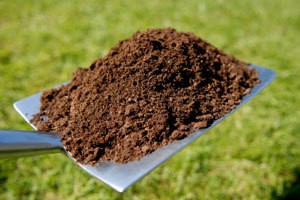
The recipe for making compost is simple. Start with some greens, add in as many browns, toss in a handful of dirt, and moisten with water. Stir occasionally and let cook for a few months to a few years, depending on the temperature of the pile. So, how do you know when your compost is finished? And what, exactly, should you do with it when it's done? Read on to find out.
It's easy to tell when your compost is finished. Look for these 3 signs.
The "Jar" test is useful if you have any remaining doubts about whether or not your compost is finished. Scoop some compost into a jar and add some water until it's moist. (Empty plastic containers with lids or freezer bags work just as well.) Seal the jar tightly and leave it alone for a week. After a week, open the jar and check for odors (brace yourself!). Does it smell sweet and earthy or sour and stinky? If your compost needs more time, you'll know.
Screen It
It's helpful to sift finished compost using a _ to 1/8 inch screen before using it. This separates out any coarse, woody debris that may not yet be fully decomposed, which could steal valuable nitrogen and oxygen from your plants when added to your soil. One way to do this is to build a simple wooden frame covered in screen. Construct it to fit over the top of your wheelbarrow or garden cart to catch the debris as you shovel it out of your pile. You could also construct a second compost enclosure near your active pile, for the sole purpose of holding finished compost.
Condition Your Soil
Compost will improve the structure and texture of any soil, and releases valuable organic nutrients slowly over time. Add it to sandy soils to increase the soil's ability to retain moisture and nutrients. Add it to clay soils to improve drainage and air penetration. No matter what type of soil you have, compost will improve the disease resistance of your plants. That's because some of the organisms that break down organic material into compost produce natural antibiotics that discourage the growth of soil-borne fungal diseases. Finished compost also has an almost neutral pH, so adding it to soil can help balance pH problems. To condition your soil with compost, spread 2-4 inches over the soil and turn it in with a shovel to a depth of 6 inches.
Mulch With It
Nature is the ultimate composter. One only has to look under a tree or walk through a forest to see composting in action. Year after year, layers of vegetative debris accumulate on the ground, protecting roots, suppressing weeds and regulating the moisture and temperature levels of the soil. To use compost as mulch, top dress garden plants and shrubs by spreading 2-3 inches of compost around the base.
Make Potting Soil
Compost makes an excellent potting soil that can be used for growing plants, transplanting, and starting seeds. To make potting soil with your compost, mix finely screened compost with 1 part coarse sand, 1 part peat moss, and 1 part perlite.
Rejuvenate Your Lawn
Another area to use compost is on your lawn. It releases nutrients that stimulate root growth, prevent erosion, and attract worms, beneficial insects and microorganisms to the soil. After aerating your lawn in the spring or fall, apply 1/8 to 1/4 inch fine compost and a rake it in.
Have a Tea Party
A great way to provide liquid fertilizer for plants is to brew compost tea. Fill a burlap sack or an old pillowcase with finished compost and tie the end closed. Place in a tub, or 5-gallon bucket filled with water and let it soak for a few days. Use the nutrient-rich "tea" on houseplants, seedlings, or in the garden. Store it for up to 3 months in a covered container.

About The Author: Ellen Brown is an environmental writer and photographer and the owner of Sustainable Media, an environmental media company that specializes in helping businesses and organizations promote eco-friendly products and services. Contact her on the web at http://www.sustainable-media.com
Add your voice! Click below to comment. ThriftyFun is powered by your wisdom!
Another way to see if the compost is "done" is to try to germinate 10 radish seeds in it. Radishes are easy to germinate. If most of the seeds come up, it's ready.
Our neighbor brings down a load from the barn when he cleans his pony stalls out. We let it set in a pile for a yr. and turn it once or twice.
Add your voice! Click below to comment. ThriftyFun is powered by your wisdom!